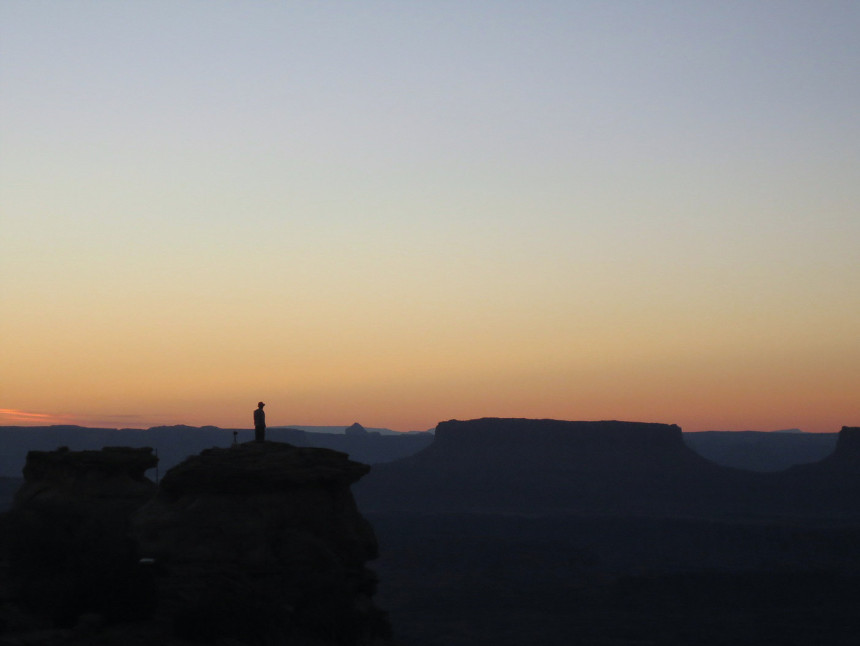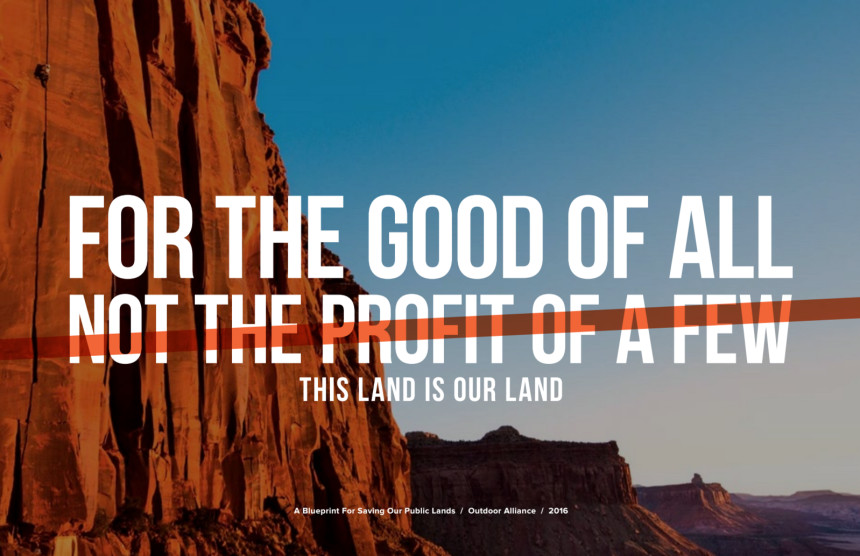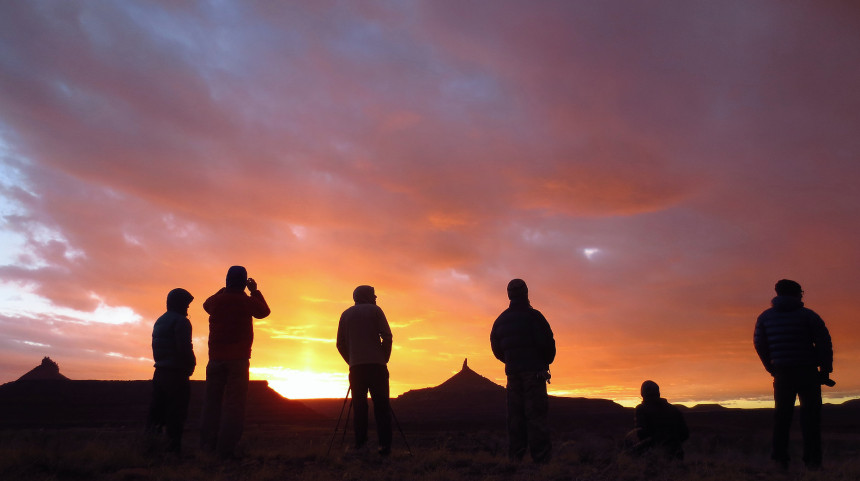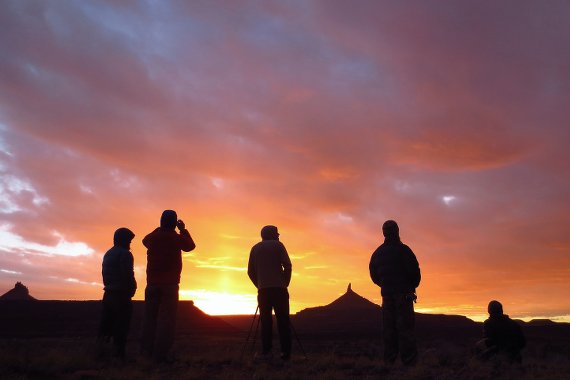Truth be told, I don’t really care for splitters.
Sure, as an artist and a philosopher I admire them for their elegant simplicity. They are the essence of “the line.” Black snakes sinewing up red cliffs. Splitters are singular. Focused. Pure.
But they inspire only fear within me, inscribe terror upon my meek climbing soul. They rip and shred my pathetic fingers and hands, and they shatter whatever confidence I have stored up after 15 years of medium-hard climbing. At the base, tying in, lacing shoes, I feel myself a man about to walk into battle; a boy about to become a man; a psychedelic compound about to take make minced meat of my fragile psyche, as I quiver in my boots like a mangeeaten dog alone and howling in the blackness of night.
Related: 10 Helpful Tips for the New Crack Climber
In other words, I have a complex.
But complexes and fears aside, I keep coming back to the Creek. Because, how could I not?
Of course, no case needs to be made for the Creek. Everybody and their mom has hashtagged the Creek at least once, been there at least twice, sucked sandcrusted gobies dry enough times to do an FB post about it. We tell everyone we know about the Creek. Foreign climbers come to the US of A just to spend a week in the creek. The Creek is not a secret. The Creek is paramount—iconic and emblematic. It is rock climbing.

Related: Climbing Destination Guide — Moab, UT
Go there. Catch a sunset. Catch a sunrise. See the Creek running—I don’t care if it’s full of manure and other livestock swill – see it. Hear the coyotes. Scan the canyon walls for secrets that I need not write about here. See the snows on the Abajos. The lavender blooming wildflowers in the springtime, the painted skies, the shadow of the six-shooters moving across the desert floor like some sort of cosmic clock, measuring time in a place where time needs no measuring. See the sunrise, the sunset, the dipper and Orion, and the milky way, and the cottonwoods’ shaggy silvery bark in the full moonlight. See the people, the dissidents, the conscientious objectors, the lifers, the diehards, the desertrats, the communal living desertdirtredsmiling people of the creek. See it all, gawk it all, take it all in, and see if you don’t come out bleeding just that much redder.
The Creek’ll put the iron back in your blood, set the marrow in your bones aboil with lifezest. The Creek is, in some ways, in some capacity, absolutely and unequivocally the best. Splitters, I say, be damned. It doesn’t matter, when you got that kind of land.
It could be better, yes. There’ll always be the “usedtobe”‘s and the “backintheday”ers. I’m not saying it’s perfect.
But it could most certainly—and quite possibly—be worse.
Related: Indian Creek — A Photo Story

If you haven’t heard of the Public Lands Heist, consider this a polite invitation to inform yourself. Our public lands are in danger of being sold to the highest bidder—and that includes the Creek.
Sure, it aint what it used to be—like all good things. But it also aint what it might end up being if we sit on our asses and do, say, and feel nothing.
See the Creek, see the Creek, see the Creek. Close your eyes and see it.
Now see the Creek. And an oil derrick.
It’s a real threat. It’s a possibility.
But it’s not an inevitability.
So feel something. Feel the Creek in your bones. Let the Creek move your fingers to hover over links, and click things, and take a few moments of your day to make a difference.
But this won’t make a difference, I’m so small, what can I ever achieve?
… is an understandable, but inaccurate sentiment. Your voice does matter. You can affect change.
Related: Protecting the Climbing Areas We Love
Here’s how
Step 1: Sign the petition
Sign the petition you need to sign. protectourpublicland.org is an incredible resource with an elegant lay out of the land heist situation, an extensive list of affected areas, resources for how to help, and fun facts such as: “71% of climbing is on public lands.” It is an easy website to navigate, the information is poignant and concise, and the petition takes approximately 0.05 minutes to sign.
Step 2: Write your representative
Find your state representative, and write them. Apparently very few people do. Easy + Stupid + False = “Ah, my one letter won’t make a difference.”
More Difficult + Smart + True = “If I take it upon myself to do this, maybe others will, too. And if we all do, our voices will be heard.”
Step 3: Share the petition
Copy and paste http://www.protectourpublicland.org/ into your social media feeds, and share. If you found this article helpful for generating the stoke necessary to do steps one and two, then copy paste the url in a separate post, and share. Don’t back off. This matters. Like, actually, really, seriously, matters.
Step 4: Read about it
Here and here:
- Why The Government Owns So Much Land in the West – NYTIMES,
- The Larger but Quieter Than Bundy Push to Take Over Federal Land – NYTIMES
Here, here, and here:
- How an East Coast Think Tank is Fueling the Land Transfer Movement,
- The Taxpayer Money That Fuels Federal Land Transfer Demands,
- Public-land Transfer Proponents May Have Violated Lobbying Laws (All High Country News)
Here:
And Here:
Step 5: Talk about it
You are not alone. This is an issue that affects reps and dems, blues and reds, climbers and ATV riders, fishermen and hunters, kayakers and birdwatchers, mountain bikers and mountain hikers, backpackers and trail runners, extreme athletes and casual admirers, your mom, your dad, your sister brother and everyone you know, Americans and nonAmericans, Trumpers and Sanders thumpers, everyone, everyone, everyone. This matters. And you might just be surprised to see who is willing to fight along side you to protect our public lands.









